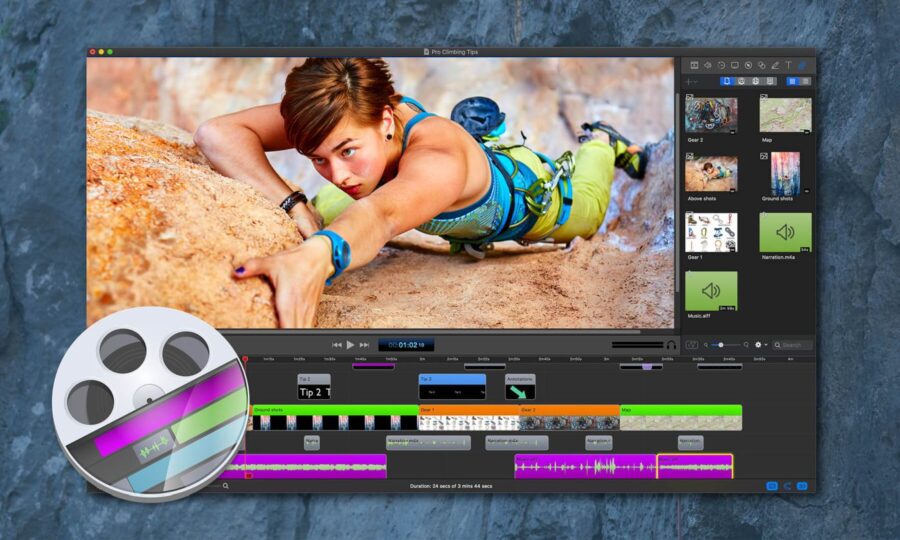Discovering the Best Screen Recording Software
Are you an aspiring YouTuber looking to take the plunge into vlogging? Are you a professional in need of recording technical procedures or tutorials for clients? Whatever your purpose, if you’re looking for the best screen recording software, you’ve come to the right place.
In this article, we’ll dive into the best screen recording software on the market, from free tools to more advanced solutions. Read on to discover the best recording software for your needs.
1. What Is Screen Recording Software?
Screen recording software is a program that allows you to record your computer screen’s activity. This includes all of the visible visuals on the screen, including images, audio, video, and other related data.
It’s also known as capture software, and it can be used for a variety of different applications.
Screen recording software is great for creating video tutorials, capturing online activities, creating demonstrations, recording gameplay, and recording videos with narration.
You can also use it for streaming web videos, uploading videos to social media, recording educational lectures, and much more.
- Pros:
- Allows you to capture any activity from your computer screen
- You can record visuals, audio, and other data
- Suitable for different applications
- Easy to use and share
- Cons:
- Consumes a lot of computer memory
- Video quality is sometimes affected
- High-quality videos may take longer to render
- Software can be expensive if you want advanced features
2. Exploring the Different Types of Screen Recording Software
Now that you know the different uses of screen recording software, let’s explore the types of software available. To begin, there are three general types of screen recording software that you should know about:
- Desktop software: This type of software allows you to record the screen of your computer. It is installed directly on your computer and records the desktop activity.
- Browser extensions: If you don’t want to install any third-party software, you can try using browser extensions. They are usually free and are available for Chrome, Firefox, and so on.
- Cloud-based solutions: Cloud-based solutions allow you to record screen activities through an online platform. This cuts down on the need for heavy software installation or onboarding.
Apart from these, there are other types of screen recording software, like video recorders, video streaming tools, and more.
Depending on your needs, you should choose the type of software that will suit you best. Take into account the features, cost, and ease of use of the software before settling on a choice.

3. Pros and Cons of Popular Screen Recording Software
When you have to record a screen or software activity, it is important to choose the right screen recording software for your needs. Some of the popular ones are Camtasia, ScreenFlow, and OBS.
- Camtasia is an all-in-one solution that allows users to record and produce professional videos. It has powerful editing tools, tons of royalty-free music and sound effects, and a wide range of annotations and animations. However, it is a bit expensive.
- ScreenFlow is an intuitive video editor for Mac that makes it easy to record and edit professional-looking videos. It supports many video and audio formats and also offers support for motion graphics, annotations, and transitions. The downside is that it isn’t available on Windows.
- OBS (Open Broadcaster Software) is a powerful free and open-source software that allows users to stream and record live video. It supports a wide range of formats, support for multiple cameras and screens, and is highly customizable. One downside is that the software can be complex to use.
Ultimately, the perfect screen recording software depends on your specific needs and budget. So, it is important to consider the pros and cons of each before deciding on which one to use.
4. Choosing the Best Recording Software for Your Needs
There are a lot of recording software options on the market, so it can be tough to decide which is best for your needs. Here are some tips to help you make that choice.
- Choose a software that fits your budget. There are packages for all different price points, so you don’t need to break the bank to get good recording software.
- Figure out the features you need. Think about what sort of output formats you’ll need, as well as other features like EQ, compression, etc. You don’t want to buy something with too many bells and whistles that you don’t need, and you also don’t want to miss out on features that could make your production stand out.
- Find the best user interface. Make sure the software is easy to navigate, and look for tutorials to help you get used to the layout. You want a program that’s intuitive and won’t add any unnecessary delays to your recording session.
- Compare demo versions before you buy. Many recording software programs offer a trial version of their software, so you can give it a test run before you commit to a purchase. This is a great way to get a feel for the controls and features of a program so you can make an informed decision.
By taking these steps and doing some research, you’ll be able to find the best recording software for your unique needs. It’s important that you invest in a program that has the features you need, at a price within your budget.

5. Tips for Getting the Most out of Your Screen Recording Software
Getting the most out of your screen recording software can be tricky. Use these five tips to help you maximize your capabilities and save time in the process:
- Keep your system up-to-date. Make sure you have the latest version of the software installed to ensure the best performance. Updates are released frequently with new features and bug fixes.
- Choose the right recording format. Different recording formats are available but some may be better suited for a specific purpose. Research the ones that meet your needs and choose the one that works best.
- Adjust the audio levels. Audio levels should be checked and adjusted when initially setting up the recording. This will ensure a balanced and clear sound during playback.
- Preview the recording. Before you start recording, it’s important to preview the video or audio to make sure everything is in order. This way you won’t have to redo everything if something is wrong.
- Crop the recording. If you recorded too much material, you can crop the section and edit out any unwanted material. Cropping the video or audio is a simple way to refine the recording.
Following these tips will ensure that your recordings are of the highest quality. Spend time setting up the software and previewing the recordings before you start to ensure that everything goes smoothly.
Conclusion
If you’re in the market for great screen recording software, there’s no need to feel overwhelmed. With all the options available, you can find one that works best for your needs, so you can start recording in no time. Thanks for reading, and happy recording!
